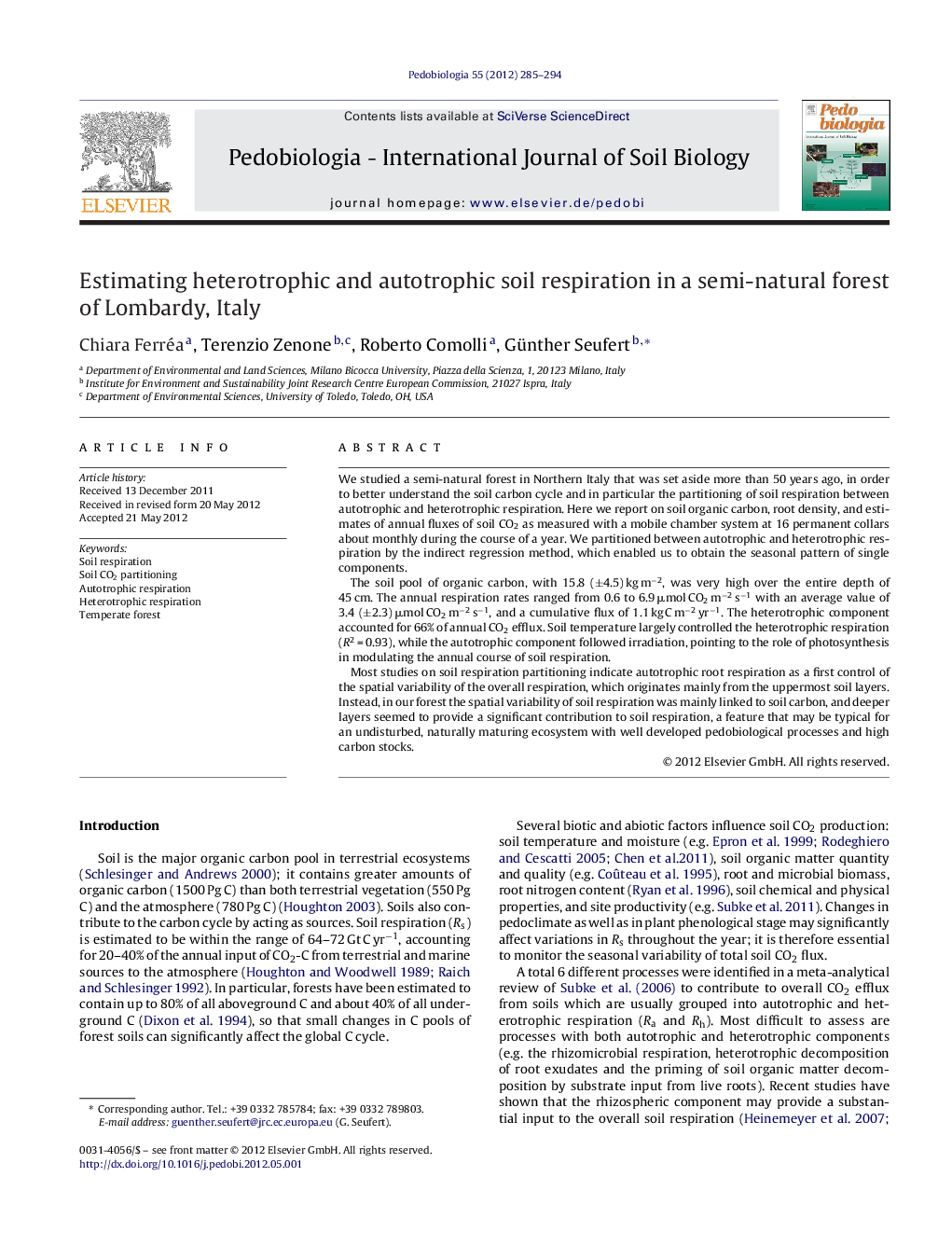| Article ID | Journal | Published Year | Pages | File Type |
|---|---|---|---|---|
| 2061449 | Pedobiologia | 2012 | 10 Pages |
We studied a semi-natural forest in Northern Italy that was set aside more than 50 years ago, in order to better understand the soil carbon cycle and in particular the partitioning of soil respiration between autotrophic and heterotrophic respiration. Here we report on soil organic carbon, root density, and estimates of annual fluxes of soil CO2 as measured with a mobile chamber system at 16 permanent collars about monthly during the course of a year. We partitioned between autotrophic and heterotrophic respiration by the indirect regression method, which enabled us to obtain the seasonal pattern of single components.The soil pool of organic carbon, with 15.8 (±4.5) kg m−2, was very high over the entire depth of 45 cm. The annual respiration rates ranged from 0.6 to 6.9 μmol CO2 m−2 s−1 with an average value of 3.4 (±2.3) μmol CO2 m−2 s−1, and a cumulative flux of 1.1 kg C m−2 yr−1. The heterotrophic component accounted for 66% of annual CO2 efflux. Soil temperature largely controlled the heterotrophic respiration (R2 = 0.93), while the autotrophic component followed irradiation, pointing to the role of photosynthesis in modulating the annual course of soil respiration.Most studies on soil respiration partitioning indicate autotrophic root respiration as a first control of the spatial variability of the overall respiration, which originates mainly from the uppermost soil layers. Instead, in our forest the spatial variability of soil respiration was mainly linked to soil carbon, and deeper layers seemed to provide a significant contribution to soil respiration, a feature that may be typical for an undisturbed, naturally maturing ecosystem with well developed pedobiological processes and high carbon stocks.
